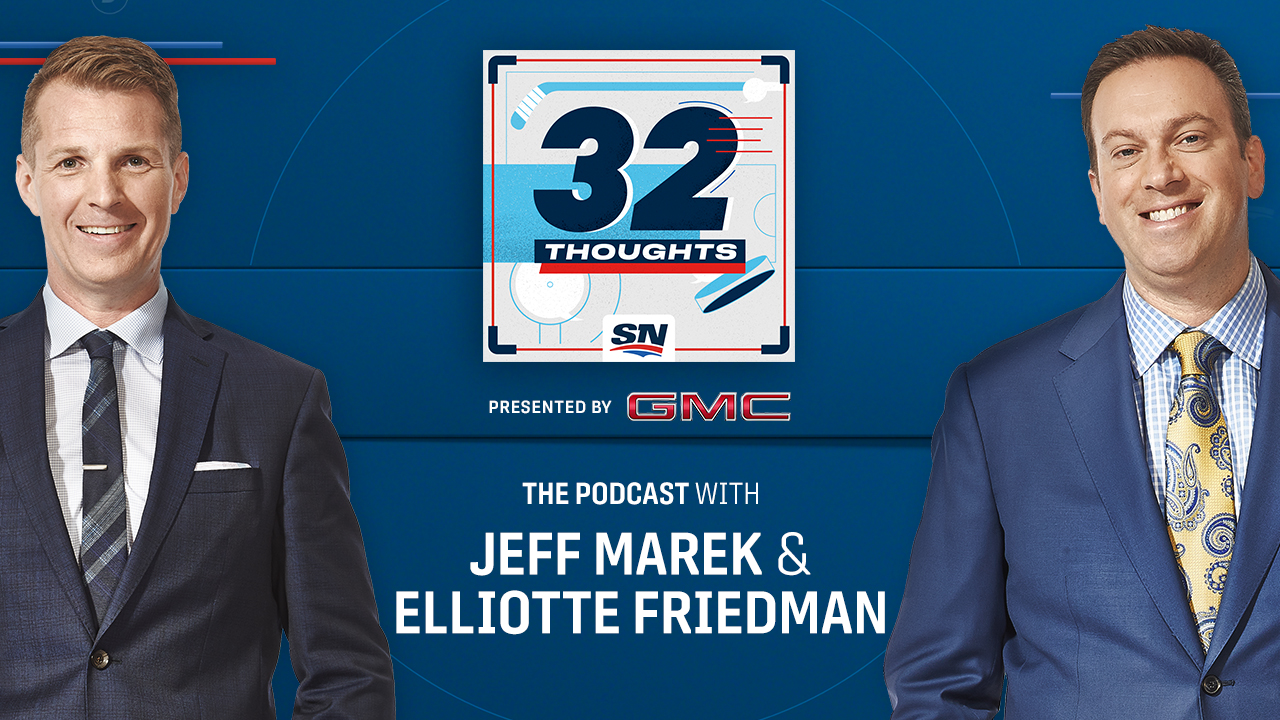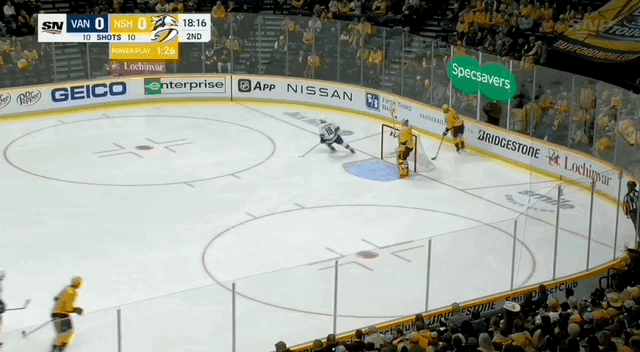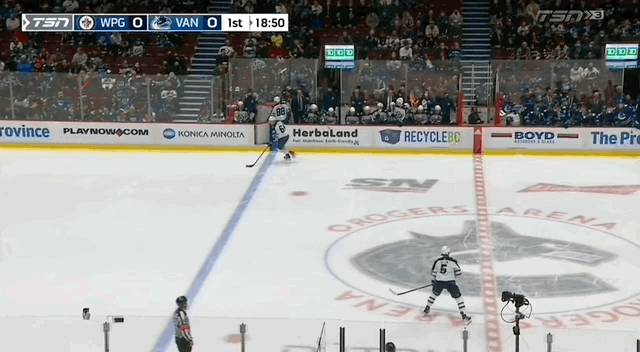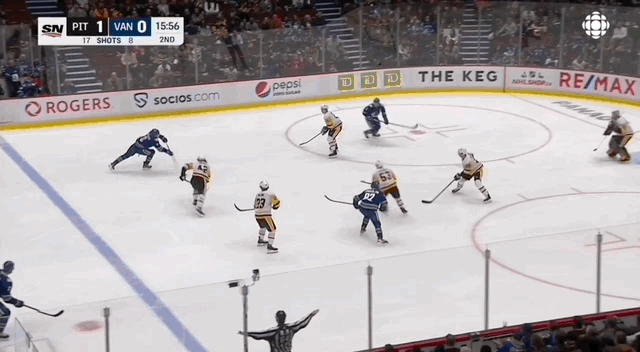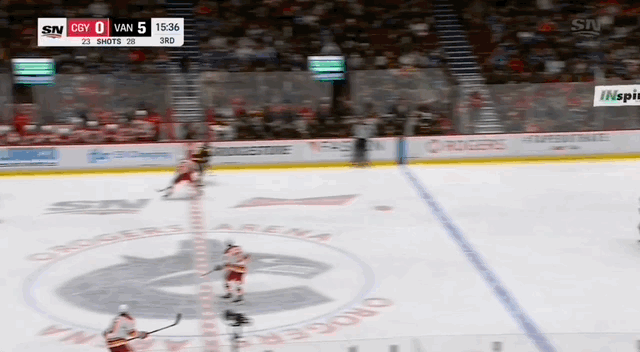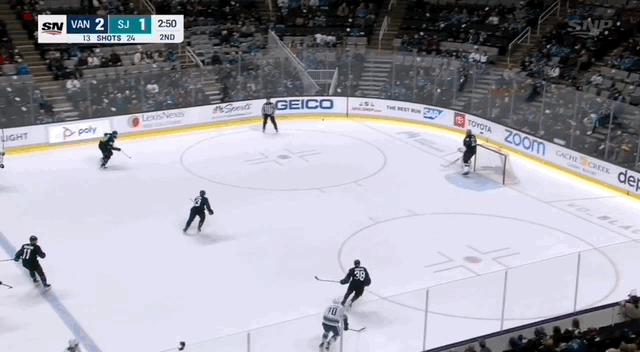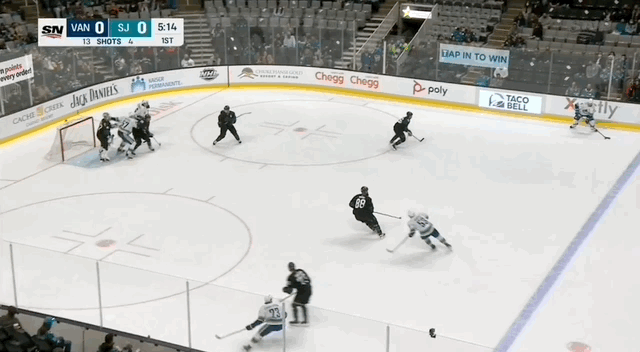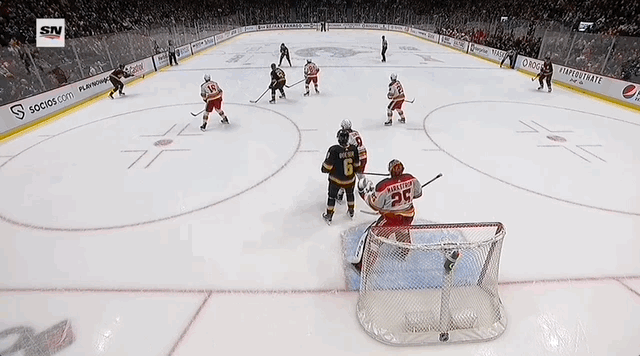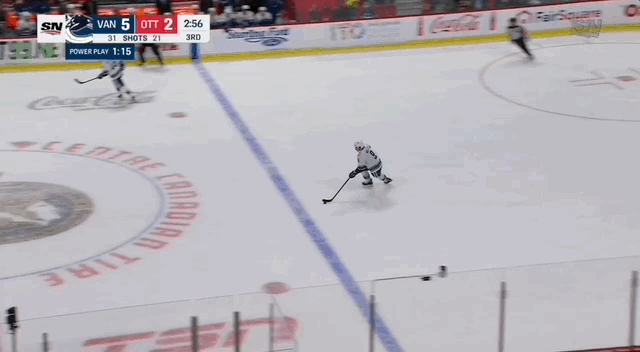If you haven’t heard rumours swirling around J.T. Miller’s future, you may be living under a rock. The Canucks obviously haven’t made a firm stance on what the outcome of this situation will be; general manager Patrik Allvin recently said that they could see a future with the forward in Vancouver. While that may be true, it’s undeniable what a trade of this magnitude could bring back — and that’s why it’s a legitimate conversation.
An acquiring team wouldn’t get a rental in the soon-to-be 29-year-old. As noted on CapFriendly.com, Miller still has another full season on his contract with a cap hit of $5.25 million. That means two potential playoff runs. As the Lightning have shown with their acquisitions in recent years of Blake Coleman and Barclay Goodrow, that can be the ideal route to extend a playoff window — even if the team can’t retain the player past their current contract.
That’s why teams around the league, including the New York Rangers, Boston Bruins, and Toronto Maple Leafs, have been so inclined to inquire about the forward.
As for the new-look Canucks front office, they have their work cut out for them to get this team back into the playoff picture on a sustainable basis. While having a player like Miller helps them in the near future, the assets they could get back for two playoff runs, versus just one next year at the deadline, could be game-changing to speed along the process. However, since they don’t have to move him now, and can punt the decision to the offseason or next deadline, they can leverage that to increase the return.
What could give Vancouver pause, and of course, entice acquiring teams, is what Miller brings to a lineup on the ice.
While moving Miller will leave a hole in the Canucks lineup, but they’d be selling high thanks to his impressive scoring. So far, he has 20 goals and 37 assists for 57 points in 51 games. That leads the team by a wide margin of 16 points; the next best scorer is Quinn Hughes with 41 points. Even when accounting for ice time, the forward still leads the team. His raw counts put his scoring total at the second-best of his career in fewer games, but when accounting for minutes played, that 3.2 points per 60 scoring rate leads the way. He’s managed this all the while it’s been a pretty challenging year in Vancouver, especially ahead of the coaching change.
With Miller, teams would be adding a versatile forward. That’s one of the biggest benefits. First, there’s positional flexibility. While the early years of his career didn’t see him successfully shift to centre often, he played the pivotal position at points in Tampa Bay and now with the Canucks; just last night that was between Tanner Pearson and Conor Garland in the top-six. But he can easily shift to wing too if a team’s already stacked down the middle.
Boston could use a second-line centre like Miller. Toronto could use him as a top-six winger or a third-line centre, if they preferred. New York has options, too, whether it’s on the wing this year and then down the middle depending on Ryan Strome’s future.
Then there’s versatility in his usage. In Vancouver, he’s become an all situation forward. While he may not be the most complete, two-way force, his offensive skill does translate to short-handed play since he can help disrupt the opposing team’s power-play formations.
But the highlight of his game is his play at the other end of the ice, both at even strength at on the man advantage.
At 5-on-5, he’s one of the best Canucks at getting the puck into the zone with control — ranking third behind Nils Högland and Conor Garland with 13.0 entries per 60. And no one in Vancouver has a higher rate of entries followed by a scoring chance.
His scoring plays come both off the rush and the cycle. That transitional ability obviously plays into the chances generated off the rush. As for the cycle plays, it’s his passing, shooting, and his tendency to retrieve pucks that helps Vancouver’s offence click.
In the offensive zone, he’s one of the team leaders in loose puck retrievals, whether it’s after a shot or a rebound, or while being pressured by his opponents. That’s what can often spark a play, or keep a scoring opportunity going.
Miller isn’t close to the most frequent shooter in Vancouver, but he makes the best of his opportunities. A team-leading 62.7 percent of his 5-on-5 shots come from the slot — whether he’s taking a shot, or using his size to be in a position to redirect one of his teammates’ attempts.
Shooting isn’t his only strength, though. No one’s attempted more offensive zone passes than Miller on the team this season, with 54.1 per 60. And almost 70 percent of those pass attempts have successfully connected with his teammates. So many coaches look for players who can move the puck ‘north and south’ for more of a straight-line game. With his passing, he does that at one of the highest rates on the team, but he also can move the puck east-to-west as well.
Along with that high volume of passing, quality puck movement is a key aspect of it. Miller’s among the best in Vancouver, and around the league, at sending the puck to the slot for his teammates. Sometimes, those passes come when sees his teammates set up with time and space in the higher danger areas, like the clip of Brock Boeser’s shot shows below.
Or when defenders expect him to shoot, and he can slip it to a teammate (again, with Boeser shown below).
Those skills all translate to the man-advantage, whether he’s the passer or the shooter like he was last night against Calgary.
Or, if he’s generating a chance off the rush as pictured below against Ottawa. Miller can cut through defenders and has the hands to make a skillful play in tight.
But on a team with their formations already set, he can shift positions if asked to a net-front role as well.
In Vancouver, especially earlier in the year as the team struggled, he tried to be the leading player which obviously can intensify some pressure and lead to mistakes.
If (or when) Miller’s traded, he’ll likely join a deeper playoff team which should influence his usage. Right now, he’s 10th in the league in average ice time at 20:58. But that could alleviate some pressure of him having to be the contributor, instead of one of the leading scorers when the stakes rise in the playoffs.
As Miller continues to build on what could become a career year, the interest around the league likely only rises for the competitive forward would add both a physical and skillful edge to any contender.
Data via Sportlogiq
